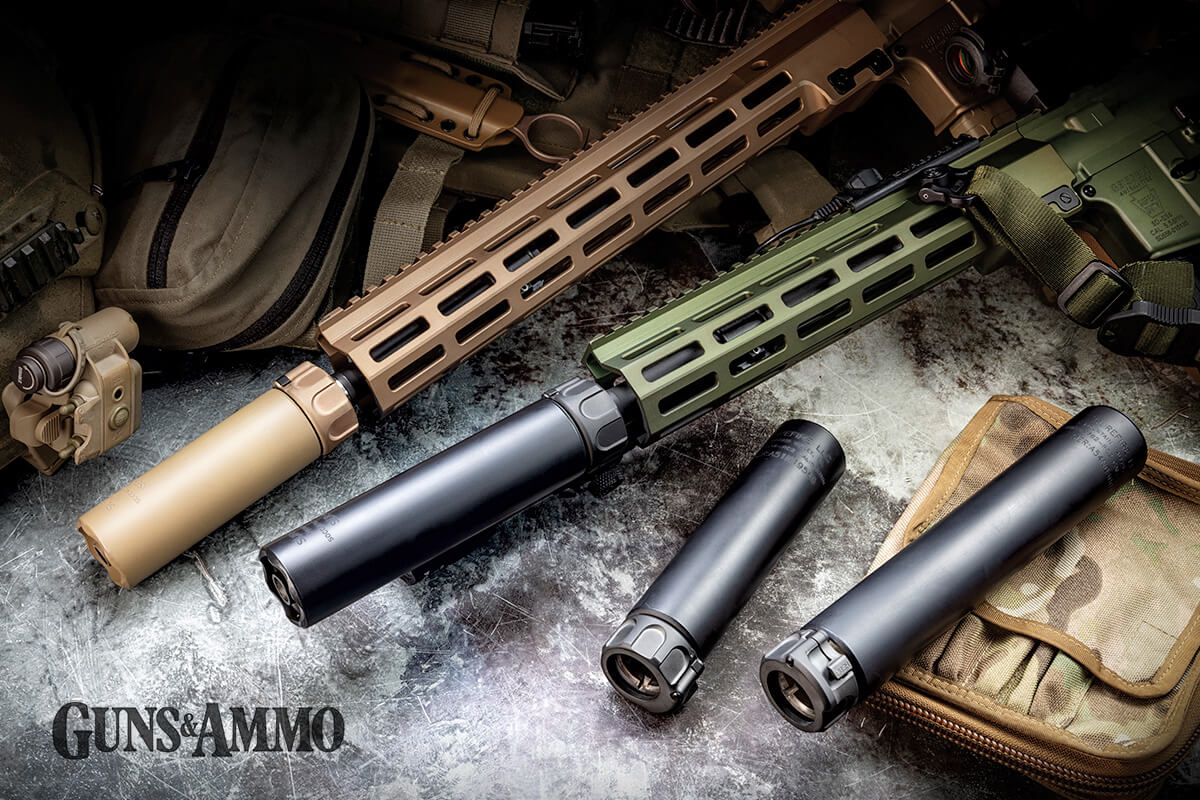Suppressors are a key piece of fighting equipment that sometimes get mistaken for a hobby item. Suppressors can be for casual use, and they’re a ton of fun in this capacity. They make guns quiet and eliminate muzzle blast, so shooting becomes more enjoyable. When introducing new shooters and children to firearms, any suppressor on the gun will make the experience much more enjoyable.
The U.S. Special Operations Command (SOCOM) views suppressors as mission-essential equipment for reasons far more comprehensive than just making a gun quiet and eliminating muzzle blast. Suppressors have become increasingly important for our fighting men and women, so the demands placed on them are more stringent than ever before. Surefire won its first big SOCOM suppressor contract in 2011, and then won it again in 2017 because the company’s “cans” best met SOCOM’s needs. This article is a look at how and why that happened.
Once upon a time …
My first couple deployments to Afghanistan provided an education on suppressors and why they were important. During one late-night raid, approximately 20 Special Forces personnel approached what I thought was going to be five-to-eight Taliban with one high-value target. In reality, there were 40 to 60 Taliban. The ensuing firefight lasted a couple hours. We had two guys without functioning suppressors and, once the shooting started, both were told to only shoot when absolutely necessary because their muzzle flashes gave the enemy an idea of where we were, which attracted all the accurate fire. Another lesson from that night was that it was much easier for me to control troop movements in the dark because I could tell by sound which gunshots were coming from my team (suppressed) and which were coming from the enemy (unsuppressed). When potential customers compare suppressors, they most often evaluate them by how much they reduce sound. Sound reduction is a consideration, but it far from first on my list. Flash suppression is highly important because I saw first-hand what happens when my rifle has no muzzle flash and the enemy’s does. Even in civilian life, if there’s ever a need to defend yourself, assume there is more than one attacker until proven otherwise. My hope is that no one reading this article ever gets in a gunfight, but if you do, eliminating the muzzle flash from your rifle gives your antagonist one less target identifier.

The experience described above happened early in my deployment, and it made me want to use my suppressor as often as possible. I quickly learned that the mounting system of the suppressor I was issued wasn’t very good. (It wasn’t a Surefire.) I sighted my rifle in at 100 yards with no suppressor, then attached my suppressor and watched my point of impact (POI) shift 6 inches from where I zeroed. This forced me to leave the suppressor on the rifle for the duration of the deployment. I ended up carrying a “daytime gun” (a modified AK-47) and using my issued M4 as my “nighttime gun.” Both accompanied me everywhere in the vehicle, however.
Advertisement
My experiences with suppressors were not unique, so SOCOM started developing a new requirement for suppressors in the mid-2000s. It was then that they focused on correcting all the deficiencies of the rifle and suppressor being issued at the time. Flash suppression, minimal and repeatable POI shift, reliability and durability became key selection criteria. Select units within the Special Operations community were, and remain, independent of SOCOM in many regards, and they run testing on every item of equipment they carry. A couple of these units were early adopters of Surefire suppressors. The first unit to adopt a Surefire was the U.S. Marine Corps Detachment One, the precursor to Marine Forces Special Operations Command (MARSOC). Det One purchased 100 suppressors and deployed with them in 2003.
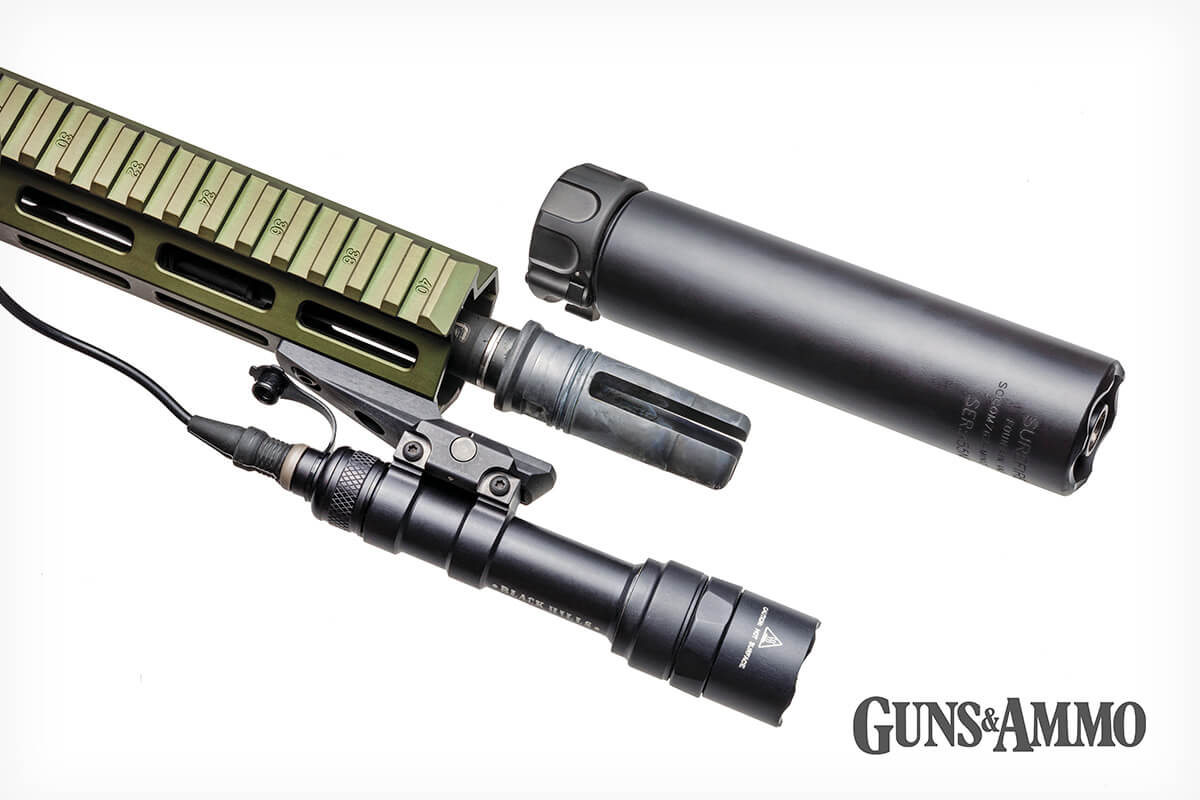
The second unit to test and take Surefire suppressors into combat was a Tier 1 element that is usually well ahead of the rest of SOCOM on testing and procurement because they are well staffed, have a good budget, and possess some additional purchasing authorities that other units do not. In fact, SOCOM frequently adopts what this unit has already tested and vetted. This unit began testing Surefire suppressors in the mid-2000s because I remember seeing them on their rifles on a deployment where my unit was co-located with theirs in 2006. One of my teammates had close friends in that unit, and he managed to get the same Surefire suppressor. Everyone on my team envied him for that upgrade.
The Special Sauce
We envied my teammate for a few reasons. The Surefire suppressor was smaller and lighter than what the rest of us were issued, and he could zero his rifle once and use it accurately with and without the suppressor. None of us had seen that happen before.
In the years since that deployment, Surefire has continued to improve on its design. They still retain the best flash suppression and minimal POI shift that I and my teammates noticed all those years ago. The other feature that I didn’t realize until after I left the service was that Surefire’s SOCOM cans have the lowest backpressure of any sealed design, and it has a negligible influence on a semi-automatic and automatic rifle’s cyclic rate. Hobby suppressors, when attached to an AR-15, usually trap as much gas at the muzzle as possible. This makes for great decibel-reduction numbers that many like to compare. However, aggressively trapping gas at the muzzle pushes more gas out of the ejection port, so the noise moves from the muzzle to the ejection port, and right next to the shooter’s head. Any suppressor designed for an AR-15 needs to balance the amount of gas trapped at the muzzle with how much it pushes out the ejection port. This is a task that Surefire mastered more than a decade ago.
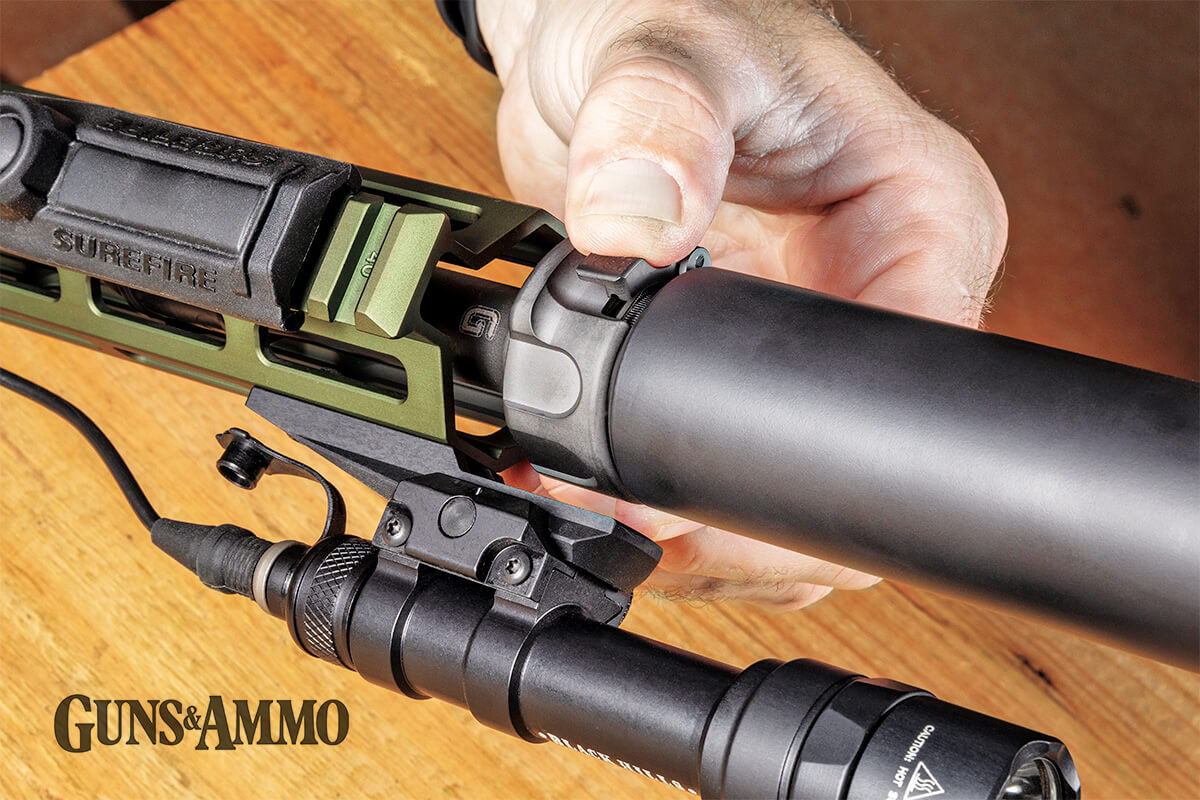
Surefire achieves low backpressure through an internally-vented baffle that minimizes pressure increases at the muzzle. Surefire suppressors are not the quietest at the muzzle, but they are one of the quietest suppressors when decibels are measured at the shooter’s ear (where it has the most impact on the rifleman).
The negative impact backpressure has on a rifle, other than additional noise at the shooter’s ear, is the increased bolt velocity when the rifle cycles. This is why SOCOM placed a lot of emphasis on minimal backpressure. When the bolt speeds up, extraction and ejection have to happen in less time, so the odds of a malfunction increase (especially with worn parts in a rifle). Backpressure absolutely must be minimized for any suppressor that will see use on a semiautomatic or automatic rifle. If backpressure goes unchecked, reliability of the rifle will plummet.

Durability also receives a lot of emphasis from both SOCOM and Surefire. Modular suppressors are all the rage these days because they allow the shooter to tailor his can to the intended application. There’s usually a module that can be removed to make the suppressor shorter, and the mounting system is often threaded into the suppressor body. While these types of suppressors are lots of fun and are great for hobby applications, I’m skeptical of their place on the battlefield. The threaded sections of the suppressor body will never be as robust as a one-piece tube. If the suppressor encounters a partial bore obstruction or sees several magazines quickly fired through the rifle, there’s a better chance of spontaneous disassembly at the thread locations.
Surefire has been the SOCOM suppressor of choice for a number of reasons, but one of them is certainly durability. I spoke to Col. Lynn Ashley, retired, the officer in charge of weapons procurement when SOCOM renewed Surefire’s suppressor contract in 2017. Col. Ashley said: “There were 16,000 Surefire suppressors in service in 2017 and only 11 had been coded out during the previous contract.” Surefire sent SOCOM 16,000 suppressors and SOCOM only managed to break 11 of them in six years. That’s a .07-percent (0.0007) failure rate. I bet if I sent SOCOM 16,000 bowling balls, they would break more than 11.

Two of the reasons Surefire’s suppressors are so durable are the materials they use and the methods used in manufacture. Surefire uses several types of Inconel for their SOCOM suppressors; Inconel is a high-temperature alloy that doesn’t erode or deform even under extreme heat and pressure. Depending on the location in the suppressor, Surefire will choose the most appropriate variant of Inconel for the application. It is an expensive material and it’s difficult to work with, but the durability it affords is worth the effort. Surefire completely laser-welds each seam on the suppressor and uses a special robotic welder that makes every weld precise. Suppressors being made are periodically pulled off the line, cut up, and put under a microscope to ensure the welded seams are done correctly at the microscopic level. Each suppressor Surefire makes has to pass SOCOM’s testing protocol: Shoot six cycles of eight magazines per cycle at various rates of fire. The rifle is allowed to cool between each cycle, but the test still puts 1,440 rounds through the suppressed weapon in a short amount of time. Many suppressors don’t survive this test, but Surefires do, time and again.
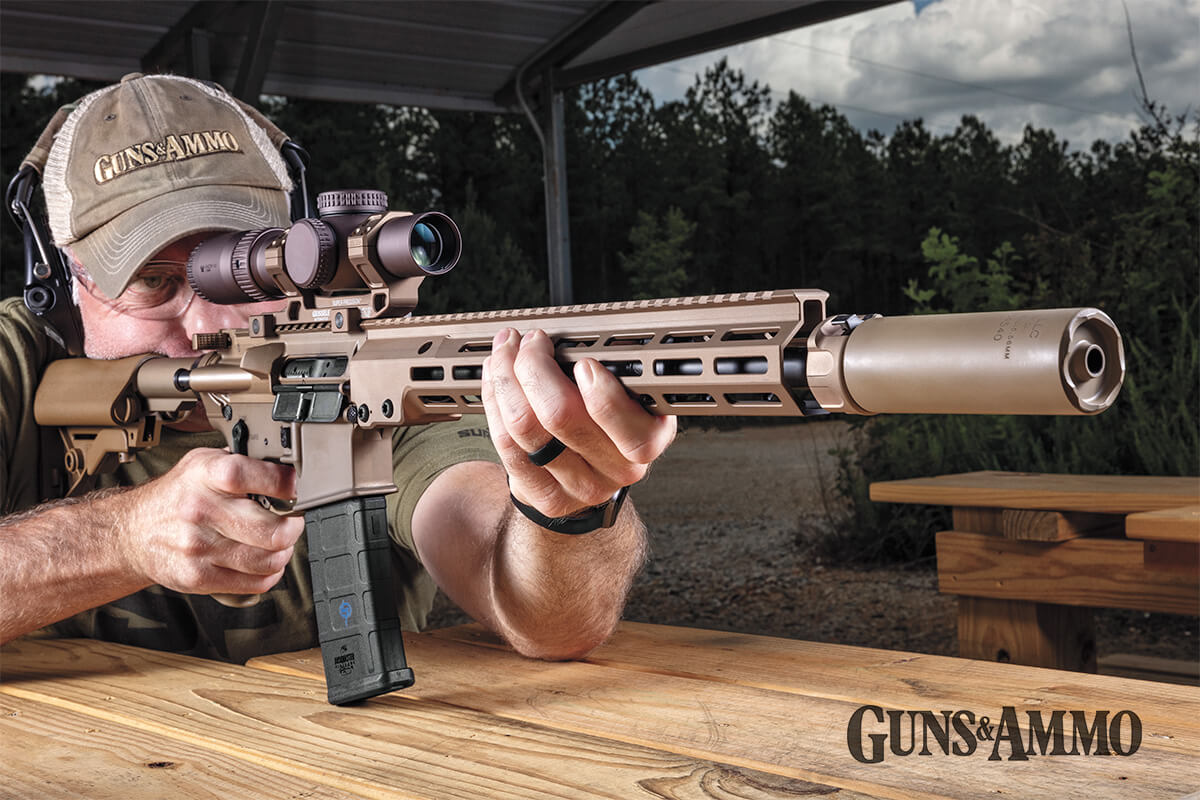
I saw my first Surefire suppressor when I was deployed to Iraq in 2006; I have been a fan ever since. My appreciation for these suppressors doesn’t come from brand loyalty, but from observed performance under difficult circumstances by men who are unforgiving with their equipment. In the years since I hung up the uniform, I’ve been fortunate to visit the Surefire factory to see these suppressors manufactured, and the experience affirmed my faith. These are professional-grade suppressors.
Today, my personal AR-15 that I keep close at hand for self-defense is a Geissele Super Duty with a 14.5-inch barrel (geissele.com). It also wears a fast-attach Surefire SOCOM556-MINI2 suppressor ($1,079). If the apocalypse started tomorrow, I would bet my life on this rifle and its suppressor.
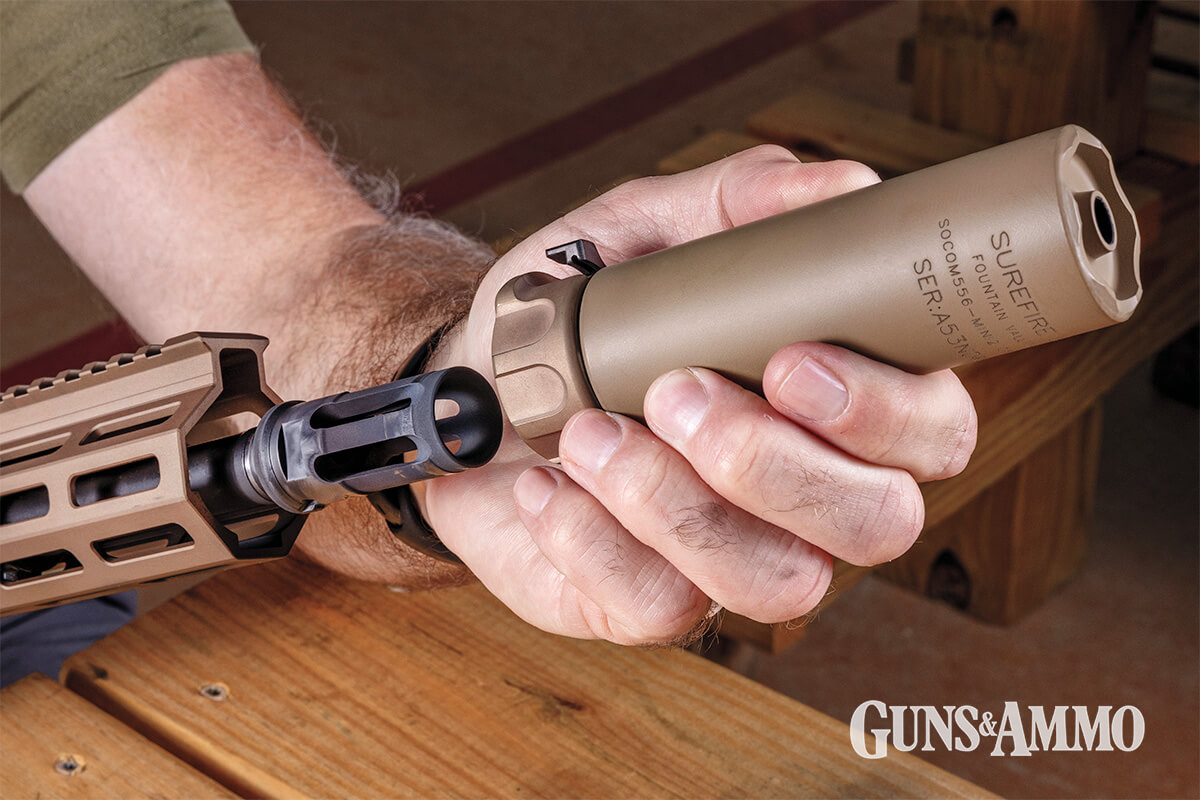
SureFire SOCOM 556 RC2 Specifications
- Weight: 15 oz. to 21 oz.
- MSRP: $1,099
- Manufacturer: Surefire, 800-828-8809, surefire.com

Read the full article here


